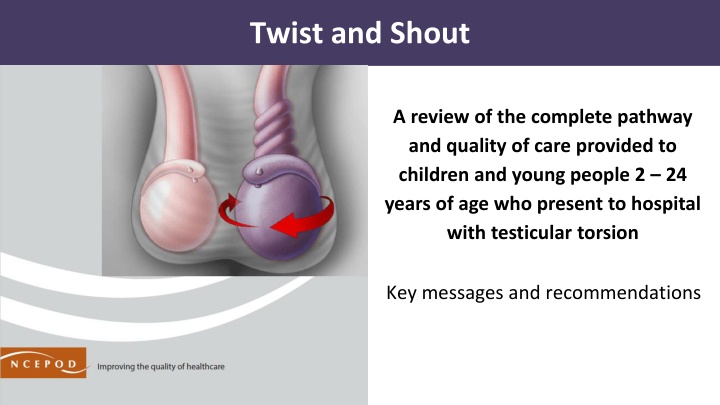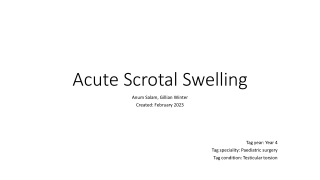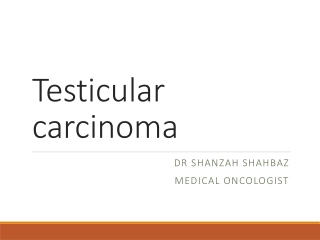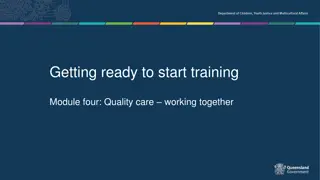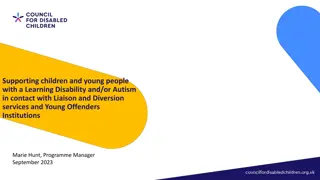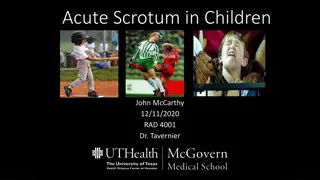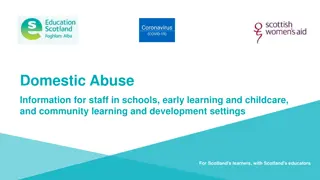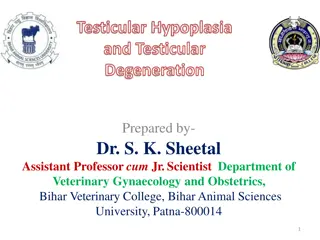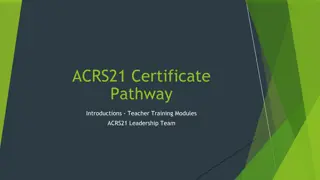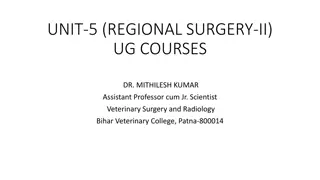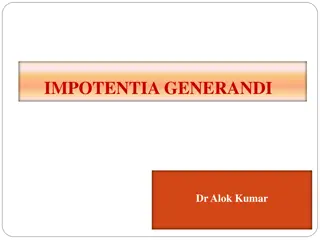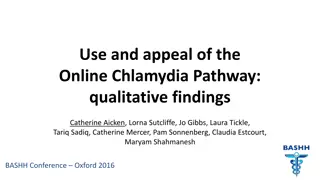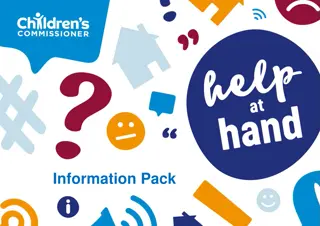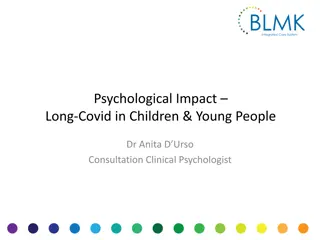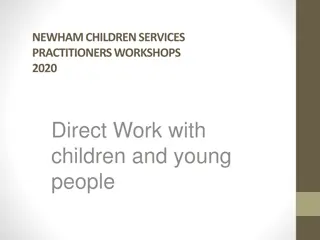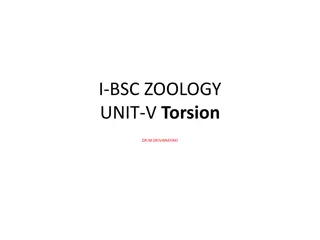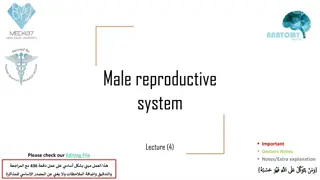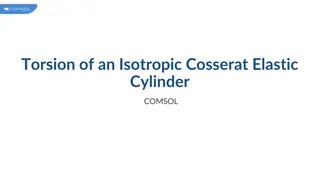Review of Pathway and Quality of Care for Children and Young People with Testicular Torsion
This review focuses on evaluating the complete care pathway and quality provided to children and young people aged 2-24 years who present to the hospital with testicular torsion. The study emphasizes the importance of raising public awareness, enhancing training for recognizing testicular torsion in primary and emergency care, and reducing in-hospital delays through clear pathways of care. Recommendations include educating parents about the signs, ensuring timely surgical intervention, and updating training modules to improve recognition of atypical signs.
Download Presentation

Please find below an Image/Link to download the presentation.
The content on the website is provided AS IS for your information and personal use only. It may not be sold, licensed, or shared on other websites without obtaining consent from the author.If you encounter any issues during the download, it is possible that the publisher has removed the file from their server.
You are allowed to download the files provided on this website for personal or commercial use, subject to the condition that they are used lawfully. All files are the property of their respective owners.
The content on the website is provided AS IS for your information and personal use only. It may not be sold, licensed, or shared on other websites without obtaining consent from the author.
E N D
Presentation Transcript
Twist and Shout A review of the complete pathway and quality of care provided to children and young people 2 24 years of age who present to hospital with testicular torsion Key messages and recommendations
The study Aim To review the complete pathway and quality of care provided to children and young people 2 24 years of age who present to hospital with testicular torsion. Data collection tools Organisational questionnaire Clinician questionnaire Primary care questionnaire Case note review Patient/carer online survey Clinician survey and interviews 2
Study population Inclusion criteria Patients aged 2-24 years, inclusive, admitted to hospital with testicular torsion between the 1st April 2021 31st March 2022 . Only patients coded with one or more of the included ICD10 codes for testicular torsion and OPCS codes for orchidopexy or orchidectomy were included in the peer-review aspect of the study. Exclusions Patients who did not undergo a procedure for testicular torsion, and patients who were subsequently identified as being admitted on an elective basis. 3
Key message 1 Raise public awareness about testicular torsion Steps in maternity/antenatal care (e.g. advice for care of a new baby in the red book) and post-natal care should be taken to educate parents/carers about the pathology and early warning signs of testicular torsion. The need to urgently attend an emergency department, and not wait and watch , to achieve surgical intervention (if necessary) within six hours when testicular pain is experienced is a critical component of this education. The health curriculum from nursery through to higher education needs to involve advice about testicular torsion. 7
Key message 2 Training to recognise testicular torsion in primary and emergency care Training modules require updating to enable primary care and emergency staff to recognise atypical signs of testicular torsion and the need to enact urgent referral pathways for timely surgical intervention. 8
Key message 3 Reduce in-hospital delays through clear, documented pathways of care and transfer Transfers should be minimised where intervention can be performed on- site. Where transfers are unavoidable, patients must be transferred to a centre where scrotal explorations can be performed safely on-site with a pre-alert system in place to inform the receiving hospital of an incoming transfer. Transfers must also be classed as urgent with the aid of clear and documented protocols and pathways. Auditing of the testicular torsion pathway, at least annually, is essential to identify areas for improvement. 9
Key message 4 Senior assessment and investigations Patients with suspected testicular torsion should have an urgent referral and clinical review by a senior surgical decision-maker (minimum ST3 or equivalent) specialising in urology, paediatric surgery, or general surgery. A consensus must also be made on the use of Doppler ultrasound on patients with suspected testicular torsion. 10
Public awareness and education Raise awareness about testicular torsion, including the need to urgently attend an emergency department if someone experiences testicular pain. This should include a continued public awareness campaign for all who may be affected, including parents/carers, and raised at all stages of development: Maternity/antenatal care (e.g. advice for care of a new baby in the red book) and post-natal care. Nursery education. The health education curriculum in primary and secondary education. Further/higher education. Primary audiences - national: NHS England, Office for Health Inequalities and Disparities, Welsh Government, Public Health Wales, Department of Health Northern Ireland, Public Health Agency, Departments of Education. Primary audiences - local: Midwives, health visitors, special educational needs staff, school nurses. Supported by: Royal College of Midwives, Royal College of Paediatrics and Child Health, British Association of Paediatric Urologists, British Association of Paediatric Surgeons, Association of Paediatric Anaesthetists of GB and Ireland, British Association of Urological Surgeons, Royal College of Surgeons, Association of Surgeons of GB and Ireland, Getting It Right First Time, Commissioners, Integrated Care Boards. 11
Recognition of testicular torsion in primary care and the emergency department Update training modules for primary care, and emergency department staff, to emphasise the importance of early recognition of testicular torsion, including atypical or warning presentations, urgent referral pathways and timely surgery. Primary audiences: NHS 111, Ambulance Trusts, Royal College of General Practitioners, Royal College of Emergency Medicine. Supported by: British Association of Paediatric Urologists, British Association of Paediatric Surgeons, Association of Paediatric Anaesthetists of GB and Ireland, British Association of Urological Surgeons, Royal College of Surgeons, Association of Surgeons of GB and Ireland, Royal College of Paediatrics and Child Health, NHS England, Welsh Government, Department of Health Northern Ireland. 12
Pathway up to and including hospital arrival Reduce delays for patients with testicular pain/suspected testicular torsion by: Minimising transfers to another hospital by referring patients to a hospital where scrotal exploration can be performed safely on-site ideally including a pre-alert to the receiving hospital. Ensuring that any essential transfer is as urgent as possible*, including when patients self-present but need to be at another hospital. Having a clear, documented clinical pathway of care for patients with testicular pain/suspected testicular torsion in hospitals where surgery for testicular torsion is undertaken, which is communicated to all healthcare professionals involved in the care of this group of patients. Auditing the testicular torsion pathway, at least annually, to identify areas for improvement. Primary audiences - national: Royal College of General Practitioners, NHS 111, Ambulance Trusts Primary audiences - local: Medical Directors, Directors of Nursing, Integrated Care Boards, Operational Delivery Networks Commissioners Supported by: British Association of Paediatric Urologists, British Association of Paediatric Surgeons, Association of Paediatric Anaesthetists of GB and Ireland, British Association of Urological Surgeons, Royal College of Surgeons, Association of Surgeons of GB and Ireland, Royal College of Paediatrics and Child Health, Royal College of Emergency Medicine, Royal College of Anaesthetists, Association of Anaesthetists, Royal College of Radiologists, NHS England, Welsh Government, Department of Health Northern Ireland. 13
Pathway in hospital Patients with suspected testicular torsion should have an urgent* referral and clinical review by a senior surgical decision-maker (minimum ST3 or equivalent) specialising in urology, paediatric surgery, or general surgery. *NCEPOD Classification of Intervention Primary audiences - national (to agree a timeframe): NHS England, Welsh Government, Department of Health Northern Ireland, British Association of Paediatric Urologists, British Association of Paediatric Surgeons, Association of Paediatric Anaesthetists of GB and Ireland, British Association of Urological Surgeons, Royal College of Surgeons, Association of Surgeons of GB and Ireland, Royal College of Emergency Medicine. Primary audiences - local: Emergency Medicine Physicians, Paediatric Surgeons, Urologists, General Surgeons, Anaesthetists, Radiologists Supported by: Medical Directors, Directors of Nursing 14
Pathway in hospital A consensus is needed on the role of Doppler ultrasound in the care pathway for suspected testicular torsion to aid surgical decision-making whilst not adding delay to surgery. Primary audiences: British Association of Urological Surgeons, British Association of Paediatric Urologists, British Association of Paediatric Surgeons, Association of Paediatric Anaesthetists of GB and Ireland, Royal College of Paediatrics and Child Health, Royal College of Radiologists, Royal College of Surgeons, Association of Surgeons, National Institute for Health and Care Excellence Supported by: NHS England, Welsh Government, Department of Health Northern Ireland, medical directors, National Institute for Health and Care Research Health Technology Assessment 15
Pathway in hospital Perform surgery for testicular torsion as an immediate or urgent procedure (NCEPOD 1 or 2)*, once the decision to operate has been made. *NCEPOD Classification of Intervention Primary audiences: Consultant Surgeons, Consultant Anaesthetists Supported by: Clinical Directors and Medical Directors 16
Discharge and follow-up Discharge information for patients, and parent/carers should include: Delayed side effects that might occur following orchidectomy, or the risk of late testicular atrophy in patients who had an operation that led to no orchidectomy, but fixation (orchidopexy), including risks to fertility. Details of patient-initiated follow-up (PIFU) follow-up e.g. to discuss prosthetic implants for patients who underwent an orchidectomy. How to access psychological support. Primary audiences: The medical team or specialist nurses caring for patients following surgery for testicular torsion. Supported by: Clinical Directors and Medical Directors. 17
Discharge and follow-up Review the care of all patients who underwent an orchidectomy in a multidisciplinary morbidity and mortality meeting. This should include primary care and, ideally a regional approach to shared-learning and quality improvement. Primary audiences: The medical team or specialist nurses caring for patients following surgery for testicular torsion. Supported by: Clinical Directors and Medical Directors. 18
Discussion Are signs of testicular torsion included in maternity/antenatal care (e.g. advice for care of a new baby in the red book) and post-natal care.? Are ED staff trained on how to recognise early warning signs of testicular torsion? Does the hospital have a clear, documented pathway or transfer protocol for patients with testicular pain/suspected testicular torsion that is known by all healthcare professional? Does the hospital have a senior urologist on site out of hours? Is a Doppler ultrasound used? And if so, does it cause delays to treatment? Are patients who undergo orchidectomies offered a PIFU to discuss prosthetic implants? 19
Twist and Shout Full report, summary and implementation tools are be found at https://ncepod.org.uk/2024testiculartorsion.html 20
